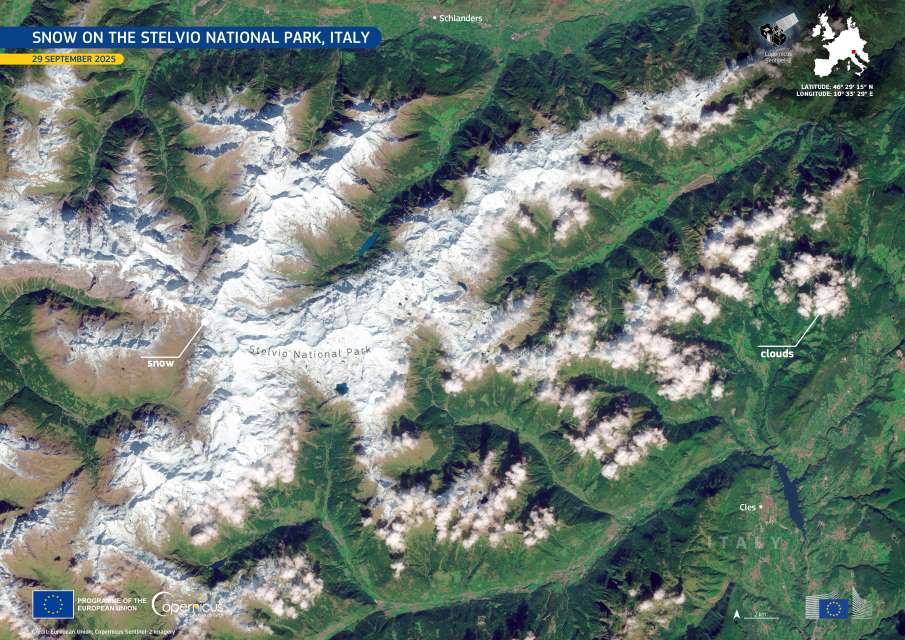Northern Italy’s Stelvio National Park, spanning South Tyrol, Trentino, and Lombardy, witnessed an unusually early snowfall at the end of September 2025. Snow was reported above approximately 1,800 m in areas such as Livigno and the Stelvio Pass, with 10 cm recorded at the pass (2,758 m) and up to 25 cm on adjacent glaciers (3,000–3,400 m). The mountain road remained open despite these accumulations.
The snowfall is clearly visible in this image, acquired on 29 September by the Copernicus Sentinel-2 satellite, showing sharp contrasts between snow-covered ridges and darker rock faces.
Stelvio National Park is a vital conservation and scientific area. Its high peaks, retreating glaciers, and fragile alpine ecosystems are sensitive to changes in climate and snow regimes. The 2025 early snowfall stands out in the seasonal cycle, offering a data point for monitoring how snow onset is shifting in alpine regions.

In the Alps, snow is generally rare at lower elevations in September, and early snow that persists is much more common on glaciers and at very high altitudes. According to Alpine-snow and ski-season guides, “until about the middle of November nearly all the action takes place on the glaciers,” with non-glacial terrain rarely sustaining snow earlier.
In many Alpine regions, the first significant snowfall that persists down to the valleys typically does not arrive until October or November.
Some ski operations in Italy do open glacier slopes in October, but even then snow cover is often unstable and new strikes seldom last long.
Thus, the 29 September snowfall in Stelvio – including snow on glaciers and passes – can be considered early relative to common seasonal patterns in the Alps.
Copernicus supports snow monitoring via Sentinel-1 and Sentinel-2, offering regular observations of snow cover, change, and dynamics. These data help researchers and resource managers study shifts in alpine hydrology, snow-melt timing, and the impacts of an evolving climate.
Featured image credit: European Union, Copernicus Sentinel-2 imagery



